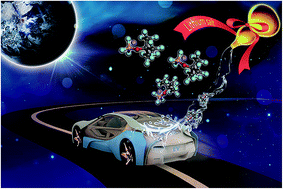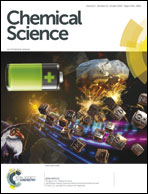A promising bulky anion based lithium borate salt for lithium metal batteries†
Abstract
A new salt of lithium trifluoro(perfluoro-tert-butyloxyl)borate (LiTFPFB) which possesses a bulky fluoroalkoxyl functional group in the borate anion has been synthesized for high energy lithium metal batteries. The presence of the bulky fluoroalkoxyl group in the borate anion of LiTFPFB can facilitate ion dissociation and in situ generate a protective film on the Li anode. As a result, LiTFPFB possesses a dramatically improved ionic conductivity and LiFePO4/Li cells using 1.0 M LiTFPFB/PC electrolyte exhibit improved capacity retention especially upon cycling at elevated temperature (60 °C). Ex situ surface analysis reveals that a protective film is formed on the lithium metal anode, which can inhibit further decomposition of the electrolyte. Furthermore, the LiTFPFB based electrolyte also imparts an excellent cycling performance to LiCoO2/Li metal cells for 500 cycles. The outstanding performance of the LiTFPFB salt demonstrates that it is a very promising baseline salt for next generation lithium metal batteries.



 Please wait while we load your content...
Please wait while we load your content...